Are boards up to the challenge of delivering a paperless NHS? Experts urge them to invest in real transformation, appreciate the broad business case and seize the chance to take better informed decisions. Daloni Carlisle explains how
NHS trust boards will be key to driving through the “paperless by 2018 ambition” but, as revealed by HSJ’s survey on the barriers to paperless, there is a widespread perception that those very boards lack the skills for the challenge.
In January 2014, HSJ, in association with BoardPad, convened a roundtable to consider this. Is the judgement from HSJ readers, as roundtable chair and NHS Confederation associate director Simon Pleydell put it, “a bit harsh”? More importantly, if the NHS succeeds in achieving the paperless ambition, what would - and could - the impact on the boardroom be?
The floods meant a number of participants were unable to attend (read on for a retrospective response from one chief executive). But those around the table included experts in IT, strategic board level leadership and clinical informatics.
- Hunt urged to address IT skills gap
- HSJ’s open letter to Jeremy Hunt
- Stuart Bain: a chief executive’s perspective
- Are you ready for your screen test? The results of HSJ’s survey
Roundtable participants
Tom Denwood local service provider programme national director and board member, Health and Social Care Information Centre
James Harley business consultant, ICSA Boardroom Apps
James Norman director of ICT, Royal Liverpool and Broadgreen University Hospitals Trust
Simon Pleydell associate director, NHS Confederation (panel chair)
Neil Stutchbury knowledge and information management director, Monitor
Colin Sweeney director of ICT, King’s College Hospital Foundation Trust
James Thomas director of ICT, University College London Hospitals Foundation Trust and chair, London Healthcare CIO Group
Dr Justin Whatling chair, BCS Health and senior director strategic consulting, population health at Cerner Corporation
Professor John Williams director of the Royal College of Physicians’ health informatics unit
Paper still the norm
Mr Pleydell set the scene. The state of NHS IT was, he said, hugely varied. At one end were those trusts with sophisticated systems that were very much on the road to being paperless; at the other were those organisations where paper was still very much the norm.
“The astonishing thing is the consensus from the HSJ questionnaire that we are where we are [due to] lack of leadership and skill at board level,” he said.
“I think that may be a bit harsh but why do people blame the blockages on boards?”
Tom Denwood, who runs the Health and Social Care Information Centre local service provider programme - and is working with trusts moving off national programme contracts in coming years - gave some insight into the difference between success and failure when it comes to deploying electronic patient records.
“We have reviewed 15 EPR deployments and I think the main lesson is that they are really, really hard, high risk and expensive,” he said. “It takes 21 months from signature to go live and typically we see a high rate of turnover of chief executive during and following an EPR deployment.”
‘Is the NHS too caught up in notions of clinical engagement and IT being clinically led?’
Success or failure appeared to be a function of the extent to which the board recognised that investing in IT was just part of the programme - and that investing in transformational change was just as important.
“Where it has been successful there has been a three to four year programme of transformation and a recognition that this is the end game,” Mr Denwood said.
James Norman, director of ICT at Royal Liverpool and Broadgreen University Hospitals Trust, agreed. “It’s about a mental move from paper to electronic,” he said.
“It is a culture shift.”
Admin ambition
His trust is currently on the national programme and will have to replace its patient administration system by 2016. Mr Norman is now working with the trust board to understand what that replacement might look like.
“Do we go for a full EPR, do we replace our PAS or do we look at our existing hybrid model using portal technology to connect our best of breed solutions?” he asked.
“The systems you can buy off the shelf all do the same job - it is all about how you implement it. If the clinicians do not accept it, it does not matter what system you put in.”
Does the board understand this, wondered Mr Pleydell. “Do they know what good looks like?”
‘People want to see it working as it is very difficult to take a leap of faith, espeically with the history of failures behind us’
“They are starting to because we are telling them,” replied Mr Norman. But with so few exemplar sites in the UK (by which he meant hospitals that have reached HIMSS level 7) this meant looking abroad.
“It’s a big issue. People want to see it working as it is very difficult to take a leap of faith, especially with the history of failures behind us.”
James Thomas, director of ICT for University College London Hospitals Foundation Trust, shifted the debate. Had the NHS become too caught up in notions of clinical engagement and IT being clinically led, he wondered.
Having worked outside the NHS for a large part of his career, it struck him how other sectors looked to IT to automate business processes - and how this thinking is missing in the health service.
“Our board is demonstrably clinically led and driven and one of the consequences of this is that we have not highlighted core business transaction processes,” he said.
There was a distinction, he pointed out, between things that made a difference to individual patient care and those that affected common processes such as patient flows through the system. Failure to understand this - and therefore making a choice to defer to clinicians on every decision - made it “really very difficult to put in a 2020 electronic record system”.
Common ecosystem
A second constraint was the lack of coherence across the system. Banking IT works across organisations because they act as clearing houses, using common standards. This was not true of the NHS. UCLH could be as digital as it liked - but, until referring centres caught up, it would have to operate at the level of the lowest common denominator and that often meant paper.
“That’s a really difficult issue for a board to deal with,” said Mr Thomas.
Mr Pleydell asked whether the academic health sciences centres and networks would start to drive a common ecosystem. Yes, said Mr Thomas, as would initiatives such as chief information officer networks that are now developing across the country.
Justin Whatling, chair of BCS Health and a senior director for Cerner, pulled these various threads together and called for a change in the terms of the debate.
‘The challenge is how do you leverage your data and operate your business in a new and connected way’
Too often, he said, hospitals looked to replicate paper processes as they made the shift to electronic systems. That did not make the transformational leap proven to release efficiencies and transform care.
“In Cerner, none of the hospitals I see worldwide has had paperless as an ambition. They had the ambition of changing the way they do business. The challenge is how do you leverage your data and how do you operate your business in a new and connected way. These are transformation programmes, and boards have not understood that yet.”
It fell to Professor John Williams, director of the Royal College of Physicians’ health informatics unit, to speak up for the clinician. Historically, they had been sidelined from decision making in the procurement and design of clinical IT systems and as a result had developed their own systems that did not contribute to the business, he said.
Now hospitals were trying to join up these silos in various ways: through electronic workflow-based systems, by creating a patient focused record to pull information together or (most commonly) by placing an electronic document management layer over the top.
None of these approaches was delivering the real transformation needed said Professor Williams, and none was developing the standardised, structured patient record required in a joined up NHS.
“Trust boards are really struggling with this,” he said.
He highlighted work trying to address this. The appointment of chief clinical information officers - ideally at board or board reporting level - was helping to bring clinicians’ voice to the top table; the development of standards by his own unit was helping to standardise records; meanwhile the Future Hospital Commission (another RCP initiative) was making the case for all specialists to have a generalist view.
“It’s no longer acceptable to be focused on the heart valve alone,” said Professor Williams by way of illustration. “The cardiologist needs to have sufficient generalist skills to say ‘I need to bring in the gastroenterologist’ and that means the record must be patient facing.”
Board leadership
One running theme in the debate was the extent to which boards need to model adoption of technology.
James Harley, business consultant for BoardPad - which provides an industry leading electronic meeting and document collaboration software for boards - said: “Some board meetings are still very much paper based, [and] thus have not reaped the significant cost savings and efficiencies digital boards deliver.”
Not only was this poor role modelling but it also limited the way boards could receive and understand high volumes of intelligence, he said.
James Norman of Royal Liverpool and Broadgreen Hospitals agreed. His board is still paper based - yet is in charge of considering options for the hospital’s electronic systems.
Monitor’s Neil Stutchbury added: “One thing I have been quite struck by is the change in Monitor brought about from the top. Our CEO never brings paper to his board or executive meetings - he just brings his iPad. Other directors and non-executive directors are now copying him.”
Leadership limitations
Colin Sweeney, director of ICT at King’s College Hospital Foundation Trust, took up Mr Denwood’s point about changing chief executives and the difficulty this posed when implementing new systems.
“I have been in the fortunate position of having an innovative board who said we have got to do something and a finance director who said ‘don’t tell me this will save money because I know it won’t’,” he said.
The trust is now well ahead of most in its IT as a result. But along the way, there have been four changes in chief executive and three new FDs.
“We have had to educate each one coming in and that’s been an interesting experience.”
Mr Sweeney acknowledged many of the barriers mentioned by others. Yes, he still struggled with GP practices that wanted to use fax as their main form of communication and yes, there remained some clinical systems stuck in silos.
Yes, the merger of parts of the old South London Healthcare Trust into King’s would bring technology challenges. He added another - the huge barrier of information sharing between organisations where one trust had to agree with each individual referring GP practice to share information.
But he agreed with Mr Pleydell, who suggested a tipping point had been reached - driven partly by patient experience of technology in daily life.
“There is certainly an expectation and a feeling that things are wrong and cannot go on this way,” said Mr Sweeney.
Another layer of expectation is likely to come from the regulator - as Neil Stutchbury, knowledge and information management director, Monitor, explained.
No, Monitor is not interested in which systems any individual trust might use, said Mr Stutchbury. It is, however, interested in quality and financial performance.
“And that can be linked to how people manage their information,” he said.
‘There is certainly an expectation and a feeling that things are wrong and cannot go on this way’
Monitor’s appetite for information would only grow as it sought to fulfil its new role. From setting accurate tariffs, to understanding how commissioners and providers were developing off tariff payments schemes, to driving new payment mechanisms - all required high cost and activity quality data, he said. Similarly, information around outcomes would become ever more crucial.
All this played into the need for information systems that could deliver the data and the intelligence to boards.
Mr Pleydell’s next question to the panel was about how trusts could be persuaded to make the investment in IT that was so patently needed. “How do we convince people in a cash strapped NHS that a big investment in this area is mission critical?” he asked.
The consensus was that the end of the national programme had bought these spending decisions to trust board level, where the conversation was now about the business case. Unfortunately, the case was unlikely to prove attractive to a board with a limited financial horizon.
Dr Whatling put some flesh on these bones. The HIMSS measure of digital maturity suggested that it was only when an organisation reached the high levels of 6 or 7 (only a handful of such organisations worldwide have) that the financial benefits started to accrue.
It also suggested that reaching that stage could take 10 years from implementing an EPR. Most NHS trusts were operating at HIMSS level 3 or 4 - or even below.
So the case - in the short term - may need to be made differently. Mr Thomas suggested that it should framed in terms of the transformation that the investment will enable.
Professor Williams looked back to the Francis report, which had highlighted what happens when a trust is not using information effectively to deliver quality of care and lacks clear vision at board level.
“Our view is that the fundamental foundation for high quality of care is the patient record,” he said. “Ideally it should be a record where data is inputted and coded and used for secondary purposes.”
Minimising the number of steps in collecting and coding would also contribute to raising the quality of data, he added.
Mr Norman agreed. “People do concentrate on the finances but it has to be about quality,” he argued. Having said that, he is now in the business of justifying £40m expenditure and has used “robust” processes to project £80m of savings in 10 years.
“But we have to invest £40m to realise them. We have Monitor crawling all over us as we move towards foundation trust status and we are building a new hospital so it is not easy.”
It is a real dilemma, admitted Mr Sweeney. “It is upfront costs,” he said.
The other “sell” might be found in the way that information from electronic systems can bring big data to the boardroom, enabling boards to take what Dr Whatling called “data driven decisions”.
Better informed boards
Mr Harley outlined how new electronic systems for boards could enable members to look at information in new ways, moving from spreadsheets of retrospective data to near real-time graphic displays.
Yes, there is a distinction to be made between the operational use to which data on, for example, predicted A&E breaches can be put versus the strategic information required by boards making decisions about large scale service redesign or integration. But the point was well made.
Mr Norman outlined what this might look like. Primary and secondary care providers in Merseyside and more widely Greater Manchester, the north west, Northern Ireland and into Scotland were developing a bioinformatics collaboration, sharing anonymised information and using it to develop new wellness services.
“We are all fledglings in this but the hope is that it will provide the boards with the information they need to make decisions about investing in and developing services,” he said.
Mr Thomas came at it from a different angle. WiFi-enabled beds, nurse calling systems and identity badges could be married with patient information to provide information about staffing and patient acuity, he said.
‘I was in the fortunate position of having a finance director who said “don’t tell me this will save money because I know it won’t”’
“All four of our ITUs have been digitised and we have collected 44m digital observations from 100 beds,” he noted.
The trick now was to turn this data into intelligence for the board - and that would require investment in analytics. Without this dimension, boards would simply drown in information the panel agreed.
“We need clinical informatics to make sense of big data,” said Mr Pleydell.
The messages from this roundtable to trust boards are clear. Boards do need to lead - and to lead by example (see box, left). The business case is not clear cut - and at any rate will only be realised over time and only if digitisation is coupled with transformation.
Yet the benefits - for patient safety, quality of care, making evidence based decisions about service redesign - are all there for the taking.
It’s time for trust boards to get to grips with IT, information and informatics.





















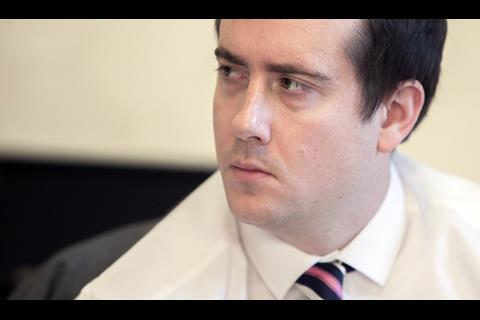

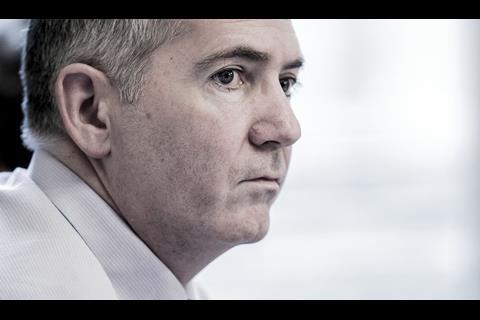
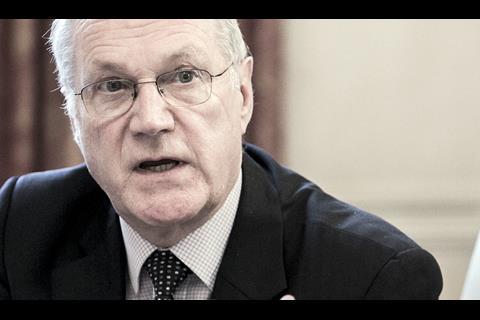
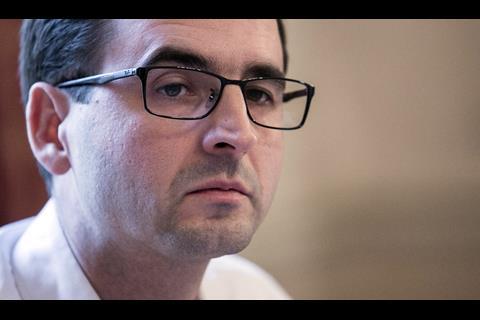


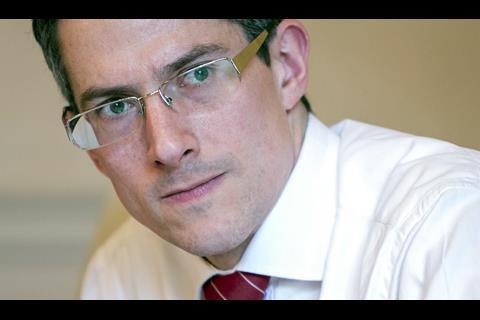



No comments yet